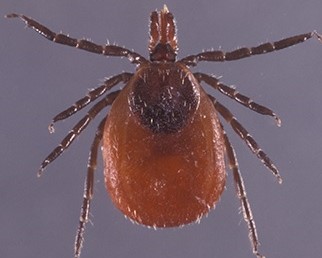
Grilling Safety
 Some “Grill Masters” barbecue all year long, but with the run of warm and then hot weather we’d had in May and June, even grilling amateurs have already started honing their outdoor cooking skills. Just maybe, a barbecue is in your plans for celebrating the 4th of July. The Montgomery County Fire & Rescue Service wants to help ensure that you and your loved ones safety enjoy this prime grilling season. So before you get your hands all sticky shaping hamburger patties dripping with BBQ sauce, make sure you read these important grilling safety tips.
Some “Grill Masters” barbecue all year long, but with the run of warm and then hot weather we’d had in May and June, even grilling amateurs have already started honing their outdoor cooking skills. Just maybe, a barbecue is in your plans for celebrating the 4th of July. The Montgomery County Fire & Rescue Service wants to help ensure that you and your loved ones safety enjoy this prime grilling season. So before you get your hands all sticky shaping hamburger patties dripping with BBQ sauce, make sure you read these important grilling safety tips.
Hiking Safety
 Hiking, biking and jogging can be a great way to break away from our day-to-day stress for a few minutes – or for a couple of hours! With nearly 200 miles of trails throughout Montgomery County, you’re likely to find a natural- or hard-surface trail that you enjoy exploring.
Hiking, biking and jogging can be a great way to break away from our day-to-day stress for a few minutes – or for a couple of hours! With nearly 200 miles of trails throughout Montgomery County, you’re likely to find a natural- or hard-surface trail that you enjoy exploring.
On a trail the only traffic you are likely to experience are other hikers, bicyclists, and joggers. Traffic jams, while rare, are generally caused by a wandering deer, energetic beavers, or a scenic lake. That said, it’s important to keep trail etiquette in mind when sharing trails with other users, and to pay special attention to safety as well. Learn more about Montgomery Parks’ trails and trail safety here:
Immunizations
 Being healthy is a very important part of staying safe as your kids head back to school. A little preparation before heading back to the books will help keep everyone in the family healthy this school year.
Being healthy is a very important part of staying safe as your kids head back to school. A little preparation before heading back to the books will help keep everyone in the family healthy this school year.
Make sure children are up to date on required immunizations. If you have a child starting kindergarten, be sure they have proof of their required immunizations (see requirements here). Maryland state regulations have also changed and require incoming 7th and 8th graders to show proof of vaccination against Tetanus-diphtheria-acellular pertussis (Tdap) and Meningococcal meningitis (MCV4) prior to the start of the school year. Don’t forget a dental appointment and a vision exam too.
Jellyfish Safety Tips
 It certainly isn’t on the level of a “Jaws” don’t-go-into-the-water fear, but every year during jellyfish season, folks have to consider that risk before entering the water. And if you or your child does get stung, there are all kinds of suggested remedies to relieve the pain…but do you know the factual from the fictitious? If a beach trip is in your summer plans, make sure you check out the information links below.
It certainly isn’t on the level of a “Jaws” don’t-go-into-the-water fear, but every year during jellyfish season, folks have to consider that risk before entering the water. And if you or your child does get stung, there are all kinds of suggested remedies to relieve the pain…but do you know the factual from the fictitious? If a beach trip is in your summer plans, make sure you check out the information links below.
Keeping Your Cool
 Remember when it was so cold this past winter that we couldn’t wait for the heat of summer? “Be careful what you wish for” might apply about now. It is important to take hot temperatures seriously as heat-related deaths and injuries exceed the number of combined deaths attributed to earthquakes, lightening, tornadoes, and hurricanes. Seniors are especially at risk for dehydration, which is why family members should be vigilant during the hot, summer months and watch for signs of dehydration in their loved ones. According to the Center for Disease Control and Prevention (CDC), on average, 675 deaths from extreme heat events occur each year in the United States. Most vulnerable are the elderly, but also at risk are those who work or exercise outdoors, infants and children, the homeless or poor, and people with a chronic medical condition. But we can all learn a thing or two about keeping our cool.
Remember when it was so cold this past winter that we couldn’t wait for the heat of summer? “Be careful what you wish for” might apply about now. It is important to take hot temperatures seriously as heat-related deaths and injuries exceed the number of combined deaths attributed to earthquakes, lightening, tornadoes, and hurricanes. Seniors are especially at risk for dehydration, which is why family members should be vigilant during the hot, summer months and watch for signs of dehydration in their loved ones. According to the Center for Disease Control and Prevention (CDC), on average, 675 deaths from extreme heat events occur each year in the United States. Most vulnerable are the elderly, but also at risk are those who work or exercise outdoors, infants and children, the homeless or poor, and people with a chronic medical condition. But we can all learn a thing or two about keeping our cool.
Keeping Hydrated
 Whether you call it aqua, H2O, agua or “Adam’s ale,” water is vital to life. It becomes even more important during the hot summer months. Waiting to feel thirsty is not a good plan since once you feel thirsty your body is already dehydrated. As the temperature continues to heat up, drinking plenty of water and being aware of the symptoms of heat exhaustion or stroke can help you stay safe while still enjoying all the activities that summer has to offer.
Whether you call it aqua, H2O, agua or “Adam’s ale,” water is vital to life. It becomes even more important during the hot summer months. Waiting to feel thirsty is not a good plan since once you feel thirsty your body is already dehydrated. As the temperature continues to heat up, drinking plenty of water and being aware of the symptoms of heat exhaustion or stroke can help you stay safe while still enjoying all the activities that summer has to offer.
Lightning
 Storms producing lightning are commonplace in our area every summer. But unfortunately almost every year tragedies occur because people underestimate the danger, or don’t follow the correct safety procedures. No one should ever think that standing under a tree is going to be protect them from a lightning strike. Make sure your family knows these electrifying facts.
Storms producing lightning are commonplace in our area every summer. But unfortunately almost every year tragedies occur because people underestimate the danger, or don’t follow the correct safety procedures. No one should ever think that standing under a tree is going to be protect them from a lightning strike. Make sure your family knows these electrifying facts.
Look out for Lyme Disease
 What is tiny, tenacious and transmits a disease? A tick. To be specific a black-legged or deer tick. We first learned to fear this arachnid in 1975 when there was an outbreak of arthritis in Lyme, Connecticut and the cause was determined to be the result of deer tick bites. Anyone who lives in Montgomery County knows our deer population has soared. As you spend more time outside, make sure you’re checking for ticks and make sure you read the following.
What is tiny, tenacious and transmits a disease? A tick. To be specific a black-legged or deer tick. We first learned to fear this arachnid in 1975 when there was an outbreak of arthritis in Lyme, Connecticut and the cause was determined to be the result of deer tick bites. Anyone who lives in Montgomery County knows our deer population has soared. As you spend more time outside, make sure you’re checking for ticks and make sure you read the following.



